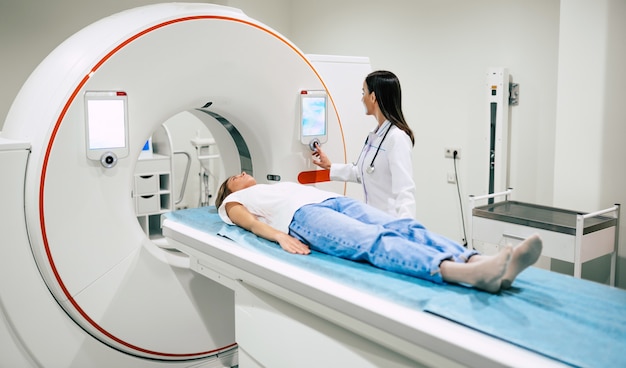A radiologic technologist, also known as a radiologic technician, is a crucial member of the healthcare team.
Radiologic technologists play a vital role in diagnosing and treating illnesses and injuries by performing medical imaging procedures, such as X-rays, CT scans, and MRIs.
The use of these imaging procedures has revolutionized the healthcare industry and has become an essential tool in modern medicine.
In this article, we will explore the role of radiologic technologists, the responsibilities they have, and the qualifications required to become one.
What is a Radiologic Technologist?
A radiologic technologist is a medical professional who operates medical imaging equipment to produce images of the body for diagnostic purposes.
These images are then interpreted by radiologists and other healthcare professionals to help diagnose and treat illnesses and injuries.
Radiologic technologists must have a thorough understanding of anatomy, radiation physics, and patient care, as well as the ability to operate complex medical equipment.
Responsibilities of a Radiologic Technologist
The primary responsibility of a radiologic technologist is to produce high-quality images that accurately depict the anatomy being examined.
This requires a deep understanding of the patient’s medical history and the specific imaging procedure being performed.
Radiologic technologists must also ensure that the images produced are safe for the patient and for themselves, as they work with ionizing radiation.
In addition to producing images, radiologic technologists must also prepare patients for the imaging procedure, positioning them correctly, and explaining the procedure.
They must also monitor patients during the exam to ensure their comfort and safety.

Qualifications to become a Radiologic Technologist
To become a radiologic technologist, individuals must complete an accredited radiologic technology program, which typically takes two years to complete.
These programs can be found at technical schools, community colleges, and universities, and they offer both classroom and clinical education.
After completing the program, individuals must pass a certification exam to become licensed as radiologic technologists.
In addition to formal education, radiologic technologists must also possess certain personal qualities, such as attention to detail, good communication skills, and the ability to work well under pressure.
They must also have a strong understanding of anatomy and medical terminology, as well as the ability to operate complex medical equipment.
Career Opportunities for Radiologic Technologists
Radiologic technologists have many career opportunities available to them, including working in hospitals, clinics, private practices, and imaging centers.
They can also specialize in areas such as mammography, MRI, or CT scanning.
Some radiologic technologists also choose to become educators, training the next generation of radiologic technologists.
Conclusion:
Radiologic technologist play a critical role in the healthcare industry by producing high-quality images that help diagnose and treat illnesses and injuries.
Becoming a radiologic technologist requires completing an accredited program and passing a certification exam, as well as possessing certain personal qualities and a strong understanding of anatomy and medical terminology.
With numerous career opportunities available, including the option to specialize and advance in their field, radiologic technologists are an essential part of the healthcare team.


